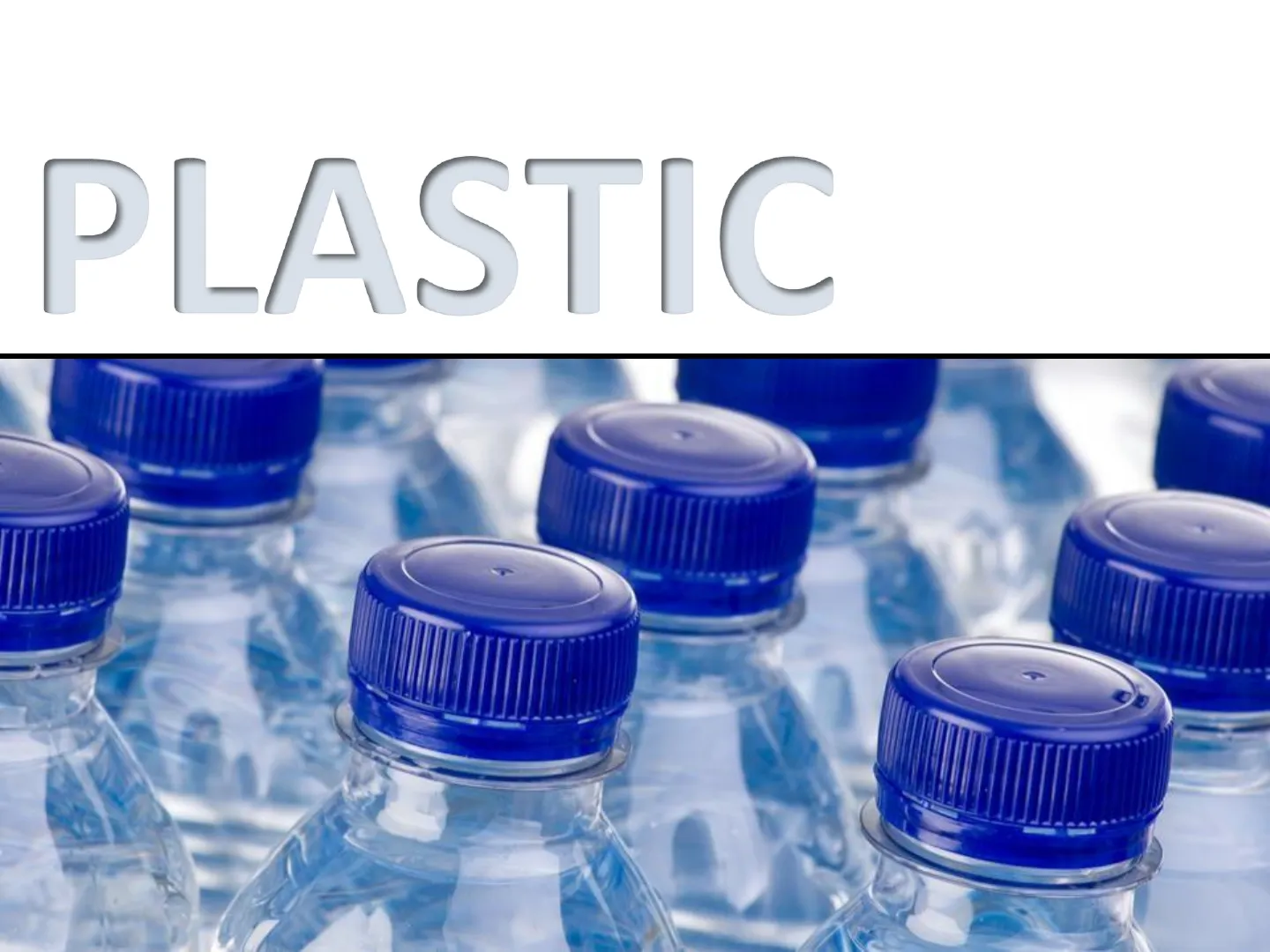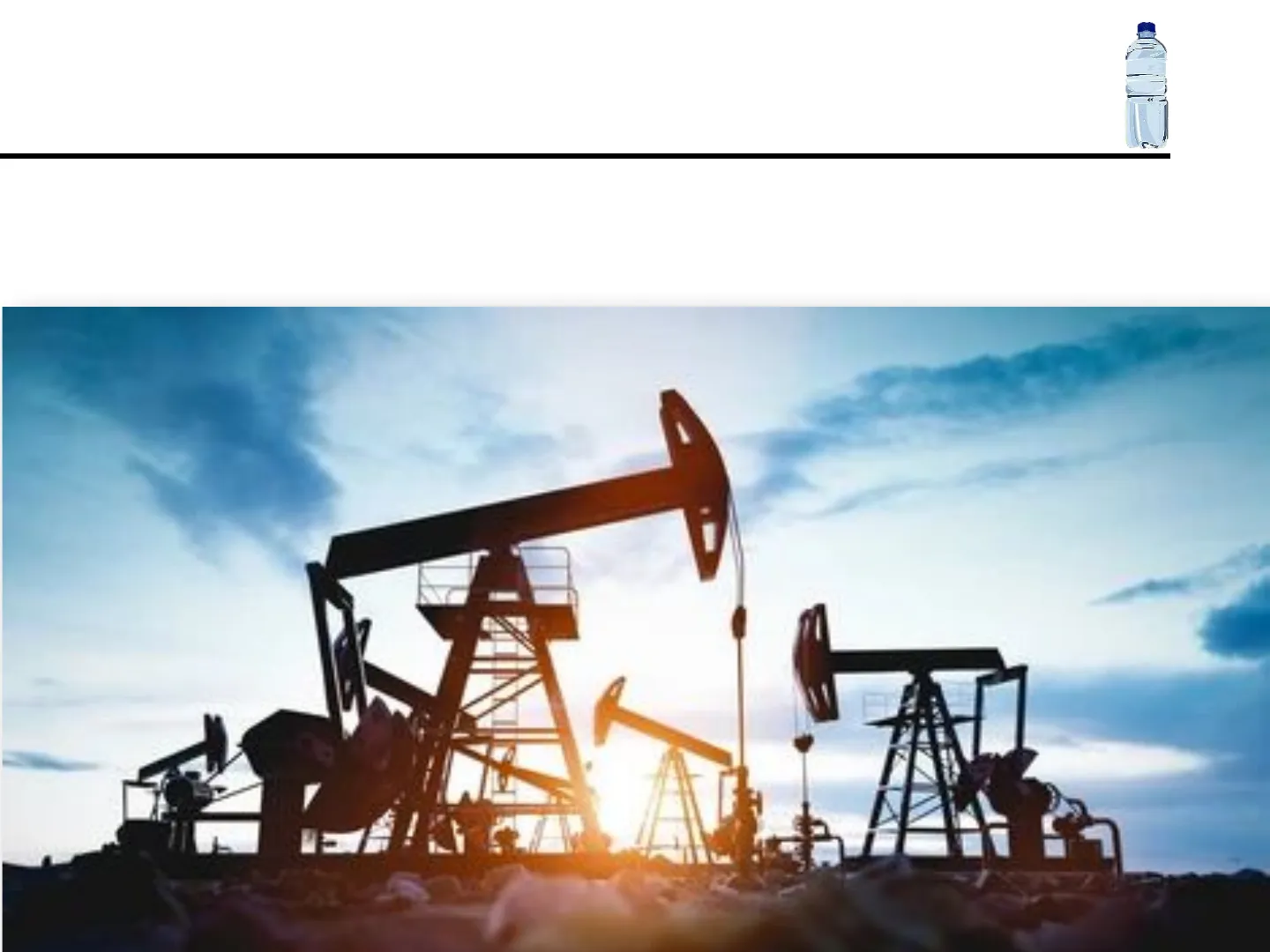Plastic: production, types, and properties
Slides about Plastic. The Pdf, a presentation for high school Science students, explores the world of plastic, defining its origin and production methods, distinguishing between thermoplastic and thermoset materials.
See more16 Pages


Unlock the full PDF for free
Sign up to get full access to the document and start transforming it with AI.
Preview
PLASTIC
WHAT IS PLASTIC?
Synthetic plastic is a material made from crude oil or natural gas.
CHEMICAL STRUCTURE
Monomers are small units of molecules.
Polymers are long chains of monomers that are linked together.
Plastic is made of polymers.
Monomer
Polymer
CH2=CH2
-CH2-CH2-CH2-CH2-CH2-CH2-
HH
-
HHHHHH
C=C
-c-C-C-C-C-C-
-
HH
HHHHHH
HOW PLASTIC IS PRODUCED
- EXTRACTION
Crude oil and natural gas are extracted
from the ground. They are transported to a
refinery.
HOW PLASTIC IS PRODUCED
- REFINEMENT
At the refinery, crude oil and natural gas are distilled
(separated) into their many different components.
Ethane and propane are two of these components.
ETHANE
PROPANE
ETHANE
ETHYLENE - CRACKING
This is a chemical process that breaks down
propane and ethane into smaller molecules,
the monomers.
POLYMER - POLYMERIZATION
MONOMER + MONOMER + MONOMER + MONOMER
Monomers are linked together to form
long polymer chains. This substance
looks similar to a paste.
HOW PLASTIC IS PRODUCED
- PLASTIC PELLETS
The polymer paste is used to produce plastic pellets.
These pellets are melted together to make plastic products.
TWO TYPES OF PLASTIC
THERMOPLASTIC
They are made of long
chains of monomers.
monomer
!
This type of chemical bond allows them to be melted and
reshaped many times. Products made from thermoplastic are
recyclable.
drink bottles
furniture
polystyrene
nylon
TWO TYPES OF PLASTIC
THERMOSET
They are made of a
network of monomers.
monomer
!
Because of this complex chemical bond, once a product is set
(formed), it cannot be heated without being destroyed. Products
made from thermoset plastic are extremely difficult to recycle.
8
&
plug
socket
artificial
leather
18
boats
POLLUTION ON LAND
There is a lot of litter (trash) on the
ground.
A lot of plastic ends up in landfills.
They take up a lot of space.
When it rains, all the disgusting liquids
collect together and create a toxic liquid
called leachate.
Leachate pollutes the soil (earth) and
water sources - harming plants and
animals. It emits chemical vapors and
pollutes the air.
Fischer
POLLUTION IN THE OCEAN
Plastic waste can sink to the bottom polluting
the ocean floor.
It can float in the ocean. A lot of plastic
collects together forming islands of garbage
called patches. There are 5 of these patches.
The Great Pacific Garbage Patch is the biggest
collection of litter floating in the ocean.
N. Pacific
Atlantic
S. Pacific
Indian
S. Atlantic
)
Animals can become trapped in
plastic and they eat the plastic.
EFFECTS ON HEALTH
UV rays cause plastic waste to
break down into small pieces
called microplastic.
Microplastics are swallowed by
all types of marine life. Through
the food chain we end up eating
plastic, too.
THE NEW FOOD CHAIN
MICROPLASTICS
TO FISH
TO US
Plastic causes air, water and land pollution. We have many health issues linked to
pollution like respiratory or cardiovascular problems and even cancer.
BIOPLASTIC
Bioplastics are plastics made from organic material. They can be made from corn,
yeast, vegetable oils, and even biomass (plant waste).
TEAST
R
CROWN
Trusted Since 1984
INSTANT
YEAST
SERVING SUGGESTIONS
Best for Soft Rolls & Bread
BIOPLASTIC
ADVANTAGES
- They reduces greenhouse gas
emissions. - Raw materials are renewable
- We use fewer fossil fuels.
- They are biodegradable.
- They encourage a circular
economy.
DISADVANTAGES
- They are more expensive to
produce than synthetic plastic.
Bioplastics are biodegradable, but
the process is complicated. - They need to be sorted.
- Special facilities are needed to
compost them quickly.
So, many of the bioplastics end up
in landfill.
circular economy - we try to use resources in a way that does not harm the
environment.
RECYCLING CATEGORIES
There are different categories of plastic. Not all of them are recyclable. They can be
difficult sort, sometimes they have a strange color or they need special recycling
factories.
PET
(2)
HDPE
3
L
4
LDPE
PP
PS
OTHER
Where
you'll
find it
Soft drinks
bottles,
food
packaging
such as
punnets
Milk cartons,
cleaning
products,
yoghurt pots,
liquid soap
dispensers
0
0
20
Blister packs,
pipe fittings,
window
fittings
Food bags,
shopping
bags,
magazine
wrapping
Margarine
tubs,
microwave
meal trays,
soup pots
Yogurt
Milk
Crisps
Crisp
packets
Rigid items:
yoghurt
pots, meat
trays, aspirin
bottles
Foam items:
packaging
(6)
PVC
HOW PLASTICS ARE RECYCLED
COLLECTION
You put plastic into a bin
and it is transported to a
collection facility.
SORTING
Plastics are sorted into
their different categories
and then sorted into
different colors.
SHREDDING
A machine shreds plastic
into little pieces called
flakes.
PRODUCT PRODUCTION
P
WASHING
Factories use these
pellets to create new
products.
PELLETS
The flakes are melted
and formed into pellets.
The flakes are washed to
remove food residue.
MEAT
THE FOUR RS
Refuse
Don't take or buy things
we don't need, like free
gadgets.
Reduce
Use fewer things made of
plastic like packaging or
plastic bags.
Recycle
Separate and garbage in
the correct bins.
Reuse
Find new ways to use
plastic products again.